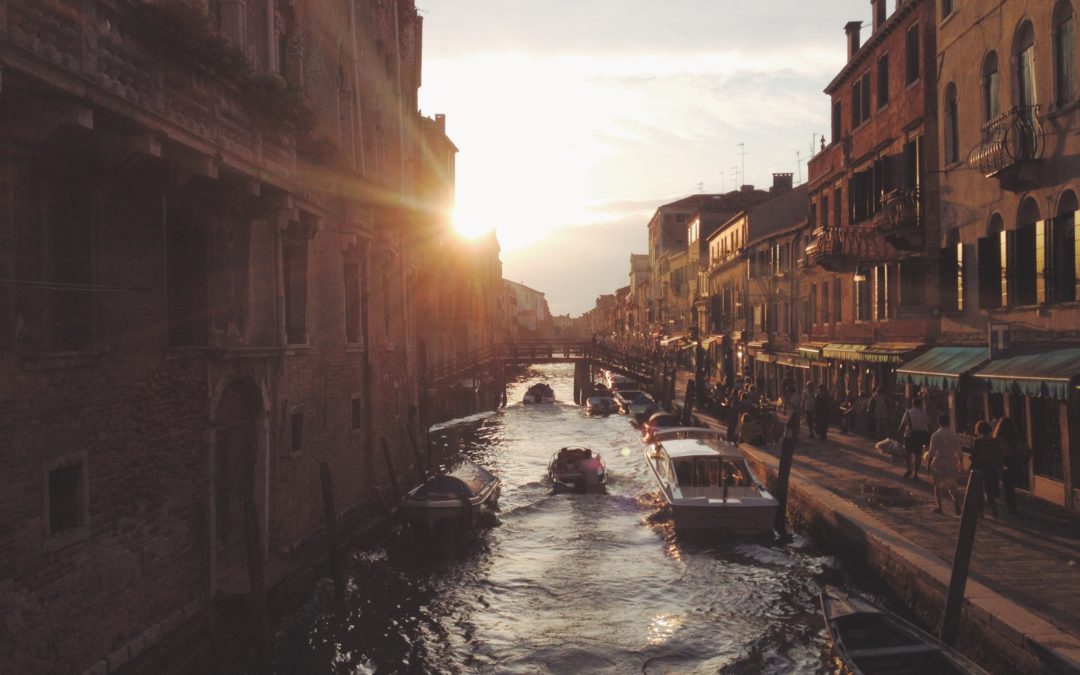Veneto is a region rich of history, beautiful landscapes and… wonderful dishes
A variety of crops and farms are rocking the Veneto region and they characterise the various courses that each city and province can offer. Ingredients change according to the area: mountains, hills, plains, river and sea areas.
There is plenty of choices. Let’s go! We can start from the aperitif. The ideal one is the ‘Aperol Spritz’, the orange cocktail born in the area between Padua and Venice, now popular everywhere in the world.
Of course, it is matched with the traditional ‘Venetian cicchetti’. We are talking about finger food, that can be fish, meat, cheese or vegetarian based. They were born in the typical ‘bacari’: very small bars located everywhere in the lovely city of Venice. ‘Cicchetti’ became so popular that now you can find them in most of the bars in Veneto.
Main course: everywhere in Veneto you can enjoy tasteful dishes
If the aperitif hasn’t made you full yet…let’s explore the main courses! There are different tastes depending on the city in which we are located. One thing is clear, you can have the aperitif at anytime, usually it is better before lunch or dinner. Let’s start with some traditional dishes, shall we?!?! We can begin with the cuisine of Vicenza, inland of Veneto. We present the ‘bigoli co l’arna’: a dish of handmade pasta, very similar to spaghetti, enriched with the genuine flavour of the duck ragù.
Are you looking for a vegetarian option? The ‘gnocchi con la fioreta’ are a warm delicious first course, with handmade gnocchi dressed with Ricotta cheese, a typical soft cheese called ‘Fioreta’.
Moving on to the land of Treviso, we arrive to the legendary ‘Risotto with red radicchio of Treviso’. Warm, tasty and delicious. It’s served especially during the winter season, giving a kick of energy and flavour to cold nights.
Last but not least, you can have also ‘Tortellini of Valeggio’. Handmade with a thin flaky dough, filled with meat, it’s the dish that can’t miss on the table of the locals during holidays.
After carbs there is meat
Let’s move to the next course: we present you another traditional dish from the province of Verona. The match of ‘Pearà and cotechino’ is a typical dish of Verona’s cuisine, served in the warmest season. Pearà is, pratically, a very pleasant creamy pepper sauce based on stale bread crumbs, on broth and on marrow of beef. Its origin comes from the chef of Rosmunda’s Queen, married with the Longobard King Alboino, King of Italy from 568d.C. to 572d.c.
Another course with a strong flavor is ‘Poenta e osei’. Since 1800, this speciality has been prepared by the Venetian ladies when their husbands came home after the hunt with a rather small prize.
The little birds are cooked on the spit or in the pan with fat and sage, and plated with the ‘polenta onta’. Jumping now from the land to the water, we introduce the king of the Venetian cuisine: the ‘Baccalà’. That’s a codfish of high quality, dried and salted. Depending on the city we are in, this fish can be cooked and prepared in different ways, one better than the other.
‘Baccalà mantecato’ is presented as a cream and served with polenta. ‘Baccalà in umido’ with a very creamy taste, ‘Baccalà alla Vicentina’ with olive oil and milk, ‘Fried Baccalà’ and ‘Baked Baccalà’.. surely your hunger will be appeased!
Dulcis in fundo: the desserts. Starting with the sweet king: the ‘Tiramisù’
It was born in Treviso around 1970, it’s a brilliant dish in its simplicity. The ingredients of the original recipe are sugar, eggs, mascarpone cheese, coffee, cacao poured and lady fingers cookies, but there are a lot of variations. It’s the perfect dessert to recharge the soul, but it is full of calories. In Italian, Tiramisù means ‘bring me up’. And there is also a sexual implication…
Oh oh oh.. Christmas is coming? The production of the ‘Pandoro’ in Verona (the biggest rival of the ‘Panettone’), is starting! Soft and sweet, this star-shaped pastry is very popular on the table of the Italians during the winter holidays. It can be filled or accompanied by the Mascarpone cream: it’s a pleasure not just for your senses, but also for your eyes.
From softness to crunchiness, ladies and gentlemen here we are with the ‘Mandorlato’.
Original from Cologna Veneta, it was probably created in the 1840, when an apothecary had the happy intuition to mix together what the ancients called ‘food of the gods’: honey, yolk, sugar and peeled almonds.
The ‘Fregolotta’ is another typical dessert of Treviso cuisine. Its name derives from the crumb, because when you brake it, it crumbs! Its taste is enriched if it’s accompanied with a good glass of white wine.
If your intention is to visit the Veneto region, it’s better to prepare yourself for eating and drinking like there is no tomorrow.

